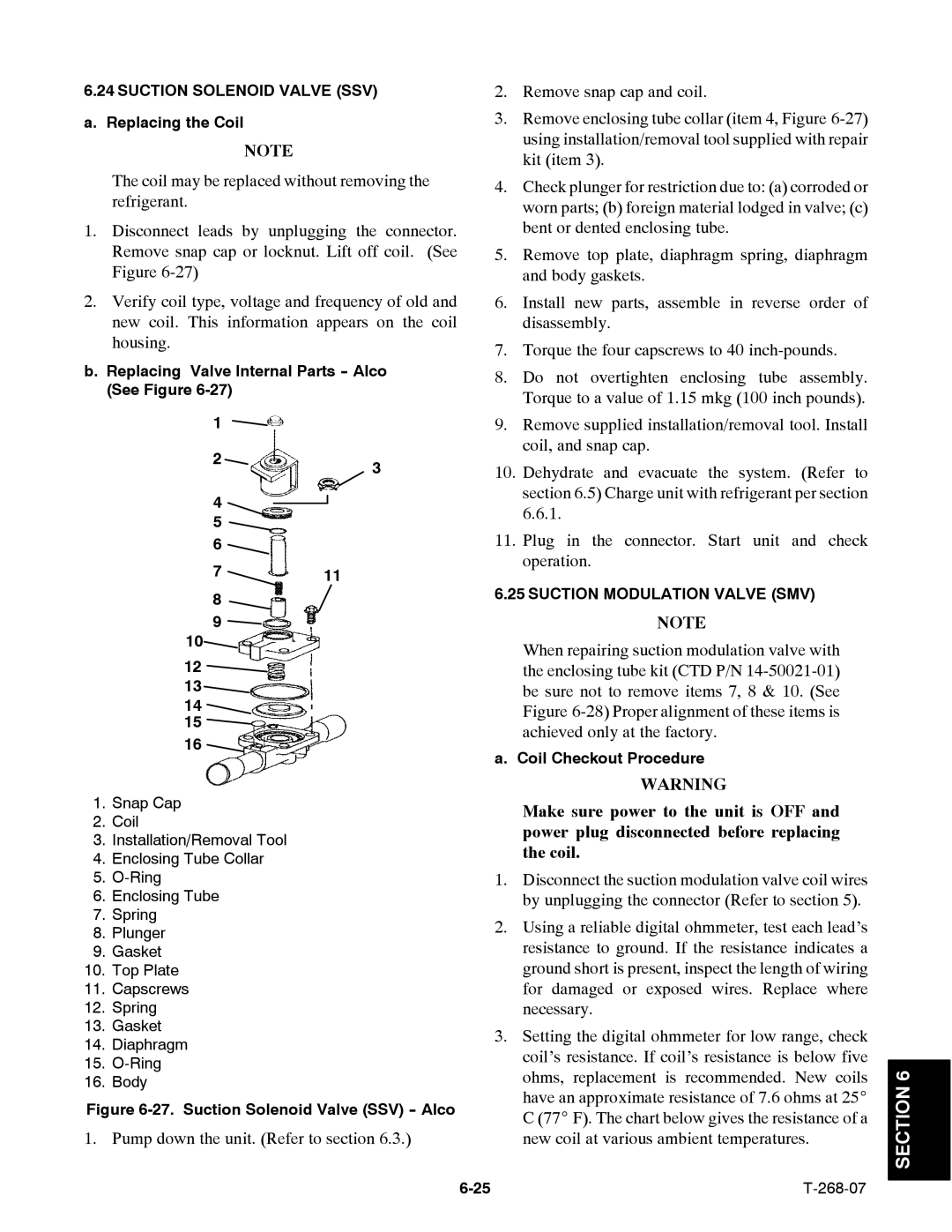
6.24 SUCTION SOLENOID VALVE (SSV)
a. Replacing the Coil
NOTE
The coil may be replaced without removing the refrigerant.
1.Disconnect leads by unplugging the connector. Remove snap cap or locknut. Lift off coil. (See Figure
2.Verify coil type, voltage and frequency of old and new coil. This information appears on the coil housing.
2.Remove snap cap and coil.
3.Remove enclosing tube collar (item 4, Figure
4.Check plunger for restriction due to: (a) corroded or worn parts; (b) foreign material lodged in valve; (c) bent or dented enclosing tube.
5.Remove top plate, diaphragm spring, diaphragm and body gaskets.
6.Install new parts, assemble in reverse order of disassembly.
7.Torque the four capscrews to 40
b.Replacing Valve Internal Parts -- Alco (See Figure 6-27)
1
23
4
5
6
711
10
12
13
14
15
16
8.Do not overtighten enclosing tube assembly. Torque to a value of 1.15 mkg (100 inch pounds).
9.Remove supplied installation/removal tool. Install coil, and snap cap.
10.Dehydrate and evacuate the system. (Refer to section 6.5) Charge unit with refrigerant per section 6.6.1.
11.Plug in the connector. Start unit and check operation.
6.25 SUCTION MODULATION VALVE (SMV)
NOTE
When repairing suction modulation valve with the enclosing tube kit (CTD P/N
a. Coil Checkout Procedure
1.Snap Cap
2.Coil
3.Installation/Removal Tool
4.Enclosing Tube Collar
5.
6.Enclosing Tube
7.Spring
8.Plunger
9.Gasket
10.Top Plate
11.Capscrews
12.Spring
13.Gasket
14.Diaphragm
15.
16.Body
Figure 6-27. Suction Solenoid Valve (SSV) -- Alco
1. Pump down the unit. (Refer to section 6.3.)
WARNING
Make sure power to the unit is OFF and power plug disconnected before replacing the coil.
1.Disconnect the suction modulation valve coil wires by unplugging the connector (Refer to section 5).
2.Using a reliable digital ohmmeter, test each lead’s resistance to ground. If the resistance indicates a ground short is present, inspect the length of wiring for damaged or exposed wires. Replace where necessary.
3.Setting the digital ohmmeter for low range, check coil’s resistance. If coil’s resistance is below five ohms, replacement is recommended. New coils have an approximate resistance of 7.6 ohms at 25_ C (77_ F). The chart below gives the resistance of a new coil at various ambient temperatures.
